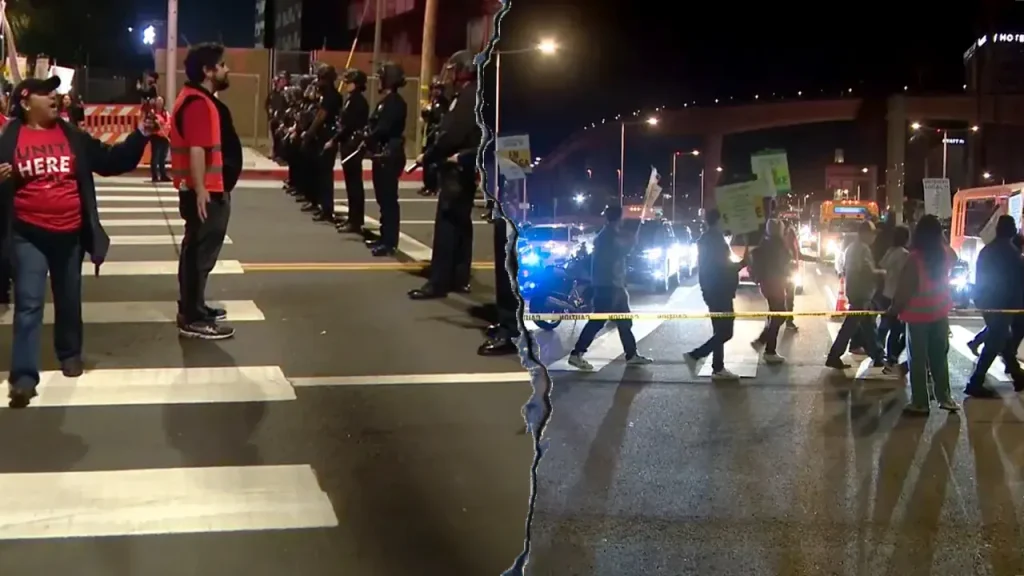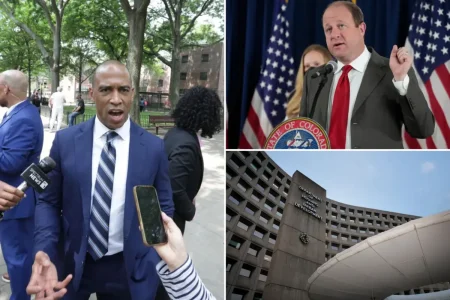LAX Holiday Travel Disrupted by Labor Protests
As holiday travelers flocked to Los Angeles International Airport (LAX) during one of the busiest travel periods of the year, they encountered significant disruptions when hundreds of protesters blocked roads outside the main terminal. The demonstrations, part of an escalating labor dispute between workers and a major airline catering contractor, created chaotic scenes as passengers abandoned vehicles and walked with luggage to catch flights. The protests highlight the growing tensions between airport service workers seeking better wages and working conditions and travelers simply trying to reach their destinations during the holiday rush.
On Tuesday evening, demonstrators marched onto Century Boulevard, effectively shutting down a major entrance to LAX and bringing traffic around the airport’s main pickup and drop-off zones to a complete standstill. The situation became so severe that many travelers were forced to leave their vehicles behind and proceed to the terminals on foot, creating scenes of frustration and confusion outside one of America’s busiest airports. Police officers in riot gear eventually responded to the situation, clearing the intersection after 6:15 PM and gradually allowing traffic to resume, though the backlog of vehicles took considerable time to resolve.
The protests continued into Wednesday morning when members of USWW, described as the nation’s largest security officers union, staged another demonstration inside Terminal 7. At the heart of these actions is a labor dispute involving Flying Food Group, one of LAX’s largest airline catering contractors. Unite Here Local 11, which represents these workers, is demanding a new contract with higher wages while also raising concerns about workplace safety and labor practices. These demonstrations reflect a broader pattern of labor activism at airports nationwide, where behind-the-scenes workers who prepare food, clean terminals, and provide security services are increasingly vocal about working conditions and compensation that haven’t kept pace with rising living costs.
“Honestly, people don’t care about the people who make food and put it on their plates,” said Susan Minato, co-president of Unite Here Local 11, explaining the motivation behind the disruptive tactics. “We wanted to make a statement.” While acknowledging the inconvenience caused to travelers, Minato defended the timing of the protests, arguing that demonstrations during peak travel periods are strategically necessary to draw attention to workers’ concerns. “It is a busy time of the year, no question,” she noted, “But that’s also how you get some attention.” This calculated approach reflects the difficult balancing act labor organizations face when trying to create leverage without alienating the public they ultimately serve.
The demonstrations come in the context of previous labor victories at LAX, where earlier this year the union successfully advocated for a city ordinance that will gradually increase the minimum wage for hotel and airport workers to $30 per hour by 2028. This success likely emboldened workers to press for additional improvements in working conditions during contract negotiations with specific employers like Flying Food Group. The timing of these protests during the holiday travel season represents a particularly effective pressure tactic, as airports and airlines are highly motivated to avoid disruptions during their most profitable and visible operating periods.
While Wednesday’s protests were not expected to completely block vehicle access to the terminals, police were reportedly preparing for potential disruptions amid the main holiday travel rush. For travelers, these demonstrations add another layer of uncertainty to holiday journeys already complicated by weather delays, staffing shortages, and near-record passenger volumes. The situation at LAX illustrates the complex intersection of labor rights, essential services, and public convenience that often emerges when workers in critical infrastructure positions advocate for better treatment. As labor activism continues to grow across the transportation sector, travelers may need to build additional time and flexibility into their plans, particularly during peak travel periods when both passenger volumes and the impact of potential disruptions are at their highest.









